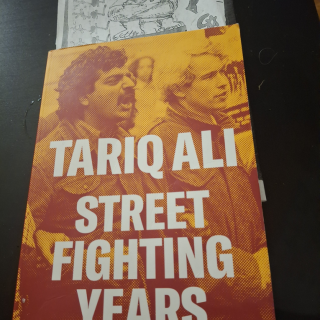This past June 5 marked fifty-four years since the assassination of Senator Robert F. Kennedy. He was forty-two years old when he was struck down by an assassin’s bullet after claiming victory in the California presidential primary. (Sirhan Sirhan, the convicted assassin, was granted parole last year, the sixteenth time he tried. While he was approved by the parole board and two of RFK’s children supported his release, six of their siblings and his widow did not. California Governor Gavin Newsom declined to free Sirhan.) Although race relations in America have, in many ways, greatly improved over the years, they are in just as many ways not much different than when John and Robert Kennedy were in power.
Sullivan, a history professor at the University of South Carolina, is an accomplished civil rights historian who has written three books on African American history and edited two others. While many historians have written about Robert F. Kennedy and his role in the freedom movement of the 1960s, she is the first who has done so in such detail.
Neither Kennedy knew much about African Americans and their struggles in American society. Although he and his wife employed a black cook early in their married life, and George Thomas, a black man, had been JFK’s valet since 1947, he confessed at the beginning of his 1960 campaign that “I don’t know six Negroes well enough to call them by their first names.”
RFK was no different. He said, “I did not lie awake at night worrying about the problems of Negroes.” And while much has been made of his successful campaign to bring the black diplomat and Nobel Peace Prize winner Ralph Bunche to speak at the University of Virginia Law School in 1951 when RFK was a student there–he even arranged for Bunche to speak to an integrated audience as the diplomat had demanded–that was a one-off situation. Conflating it to an early indication of his knowledge of and support for civil rights, as some authors have done, is overreach.
Sullivan begins Justice Rising with an account of the infamous May 1963 meeting which RFK held with the black writer and fierce critic of white America, James Baldwin. Kennedy had met Baldwin at a White House dinner and had read the essay that formed the basis for The Fire Next Time. They agreed to meet again. The second meeting was cut short due to a delayed flight, but a third meeting was planned, and Baldwin brought along several black artists, activists, intellectuals, and his friend, the actor Rip Torn. The meeting was held in the Kennedy family’s New York apartment. The blacks sat on one side of the room, the whites on the other–a portent if ever there was one.
Kennedy began the meeting with a summary of the administration’s work in civil rights. Black participants at the meeting were less than impressed and extremely annoyed with his self-congratulatory tone. Jerome Smith, an activist with the Congress of Racial Equality (CORE) who had participated in the early sit-ins and been badly injured, finally could take no more of Kennedy’s civil rights progress report; he went ballistic. He blasted the Kennedy administration for doing nothing to protect the Freedom Riders or advance civil rights, and noted that merely being in Kennedy’s company made him sick. After being asked by Baldwin if he would fight for his country, Smith most emphatically vowed he would not. By most accounts, Kennedy was absolutely stunned at Smith’s furious outburst. After several hours, both sides left the meeting feeling exhausted, angry, and misunderstood.
A number of authors have suggested that the meeting was RFK’s come to Jesus on civil rights, but Sullivan resists that, and rightly so. It is true, however, that 1963 was a pivotal year in the movement and for the Kennedy administration’s response to it. After the snarling police dogs and powerful water hoses of the Birmingham campaign in May, JFK finally decided to send a civil rights bill to Congress that would, among other things, end segregation in public accommodations, a policy he called “. . .an elementary right. Its denial is an arbitrary indignity that no American in 1963 should have to endure. . .” JFK put the attorney general in charge of the effort, but the bill was stalled when President Kennedy was assassinated in November.
The president’s murder six months later devastated RFK, and his grief was so deep and palpable, his family and friends grew concerned. Those months after his brother’s death profoundly changed him. His hard edges were softened; he became less abrupt and more thoughtful and empathetic, which helped him relate better to those who had been left out in life. President Lyndon Johnson sent him on several good will trips abroad, where he was lionized as the standard bearer for his slain brother. While he often acknowledged that “the applause is for Jack,” he took strength from it. It helped set him on the path of becoming a powerful voice for what he referred to as “the revolution within our gates, the struggle of the American Negro for full equality.
Kennedy left the Justice Department in September of 1964, but not before he helped set up a school for black children who had been denied an education in Prince Edward County, Virginia, where the public school system was eliminated rather than submit to integration as commanded by the Supreme Court. (See Something Must Be Done About Prince Edward County, by Kristen Green.) In November of that year Kennedy was elected United States Senator for the State of New York. He was far down the pecking order, and chafed at the Senate’s clubby ways, slow pace, and stultifying seniority system. But he was the brother of the slain president, and as such, attracted a lot of attention. Generally, people were interested in what he had to say about various issues.
RFK traveled the state of New York and was especially interested in visiting poor urban neighborhoods where he engaged freely with residents. He was touched by and interested in the lives of black children. He saw the impact that poverty, racism, and discrimination had on their life chances. With his Senate colleague, Jacob Javits, and the Republican mayor of New York City, John Lindsay, Kennedy won an amendment to the 1964 Economic Opportunity Act, the lynchpin of the War on Poverty, known as the Special Impact Program. It launched a study of the Bedford-Stuyvesant neighborhood, which was the largest community of color in New York City. In 1967 the first community development corporation in the U. S. was born: the Bedford Stuyvesant Restoration Corporation. The program united the government, activists, and the business community to tackle issues of economic development, financial empowerment, youth services, health, housing, and assisting small businesses. The BSRC brought tremendous improvements to Bed-Stuy as it is known, became a model for other cities, and is still in operation today.
Even though his main constituency was the people of New York state, Kennedy’s name, influence, and connections meant that he had a nationwide reach. He visited the reservations of Native Americans and was made an honorary member of the Sioux tribe. He met and befriended the Chicano leaders Dolores Huerta and Caesar Chavez, who were advocating for fair wages and better working conditions for migrant workers. Unlike many white politicians, he did not ignore northern, urban poverty, visiting ghetto neighborhoods in Illinois, Pennsylvania, and Ohio. As chairman of the subcommittee charged with measuring the success of the War on Poverty programs, he held hearings and grilled administrators.
Perhaps his most famous outreach was what some called the “poverty tour.” RFK traveled through Appalachia (see All This Marvelous Potential by Matthew Elego) and the Mississippi Delta (see Delta Epiphany, by Ellen B. Meacham) in part to gauge the success of the War on Poverty. He discovered poverty so deeply rooted that there were households in which there were no employed adults and no money, and families who–if they were lucky–ate gravy for breakfast, lunch, and dinner. He walked dusty, unpaved roads, visited unheated shacks that lacked indoor plumbing, and found children unable to attend school because they lacked shoes and clothing. His anger at these conditions saw him cross swords with southern politicians who vehemently denied that such things existed. He cajoled wealthy friends, contacted philanthropic institutions, and squeezed money out of the government wherever he could to try to ameliorate these concerns.
By the time he announced his candidacy for the presidency in March 1968, RFK had become inextricably tied to issues of race, social justice, poverty. He dared to scold white college students for turning their backs on racial injustice. Many black Americans came to see him as the only white politician they could trust. Indeed, it was RFK who told a black crowd at what was to have been a campaign rally in Indianapolis, Indiana, that Martin Luther King, Jr. had been assassinated by a white man. Standing on the back of a flatbed truck and without a security detail, he assured them he understood their anger, in part because “I had a member of my family killed, but he was killed by a white man.” Kennedy quoted Aeschylus, the Greek writer who has so informed the study and understanding of tragedy and urged the crowd and the country to turn its anger and hurt over King’s murder toward wiping out the many injustices that so desperately needed their attention. He arranged for a plane so that Mrs. King could bring her husband’s body back to Atlanta. He and his wife, Ethel, also visited the King family’s home and attended the funeral.
Justice Rising is about the heroic, almost mythical Robert Kennedy. It took Sullivan ten years to write the book, and her research skills, fluid writing, and admiration of Kennedy plainly show. The book is scholarly but accessible, and highly detailed. In Justice Rising, Sullivan has left no doubt that of the two Kennedy brothers, it is Robert who led on civil rights and John who followed. As all who have written about Robert Kennedy have done, she tries to imagine what America and the world would have been like had RFK lived and been elected president.
As a black woman and historian, I have often wondered if Kennedy’s fervor in stamping out racial injustice stemmed in part from the damage done by his brother’s administration, in which he played an enormous role. The Kennedy White House often misunderstood, miscalculated, and dithered on race; refused to confront southern segregationists in Congress; and undermined the fight for equal rights with the appointment of openly racist white judges in the south. (See The Bystander, by Nick Bryant.) There is no denying that their slow and sometimes clumsy response to segregation and inequality left black Americans at the mercy of white violence and emboldened white racists. But I have to admit that the man who initially thought of civil rights demonstrations and the “Negro problem” primarily as an embarrassment to his brother and a foreign policy headache in the Cold War finally ended up on the right side. Unfortunately, he was too late.



